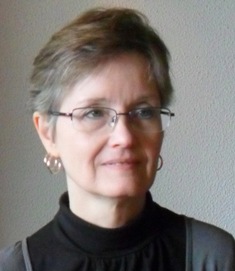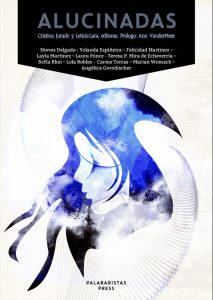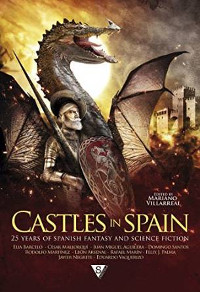 Sue Burke is an American writer and translator who has lived in Milwaukee, Austin, Madrid, and Chicago. She began writing professionally as a journalist in high school, and she has published short stories and articles in a variety of magazines and anthologies. Her novel Semiosis will be published by Tor in January 2018.
Sue Burke is an American writer and translator who has lived in Milwaukee, Austin, Madrid, and Chicago. She began writing professionally as a journalist in high school, and she has published short stories and articles in a variety of magazines and anthologies. Her novel Semiosis will be published by Tor in January 2018.
Rachel Cordasco: What do you enjoy most/struggle with most when it comes to translation?
Sue Burke: The English gives me the most problems and the most joy. Of the many theories of translation, I usually use the one that says the translator should try to write what the author would have written if he or she had originally written it in English (or whatever the target language is).
This sounds easy, but among other things, it requires understanding the author’s style and how to translate it into English. For example, if the style is beautiful and complex, what would be equally beautiful and complex in English? The ideas of beauty vary distinctly between Spanish and English. For example, Spanish shuns repetition, but in English, repetition and parallel structure can sound beautiful and even moving.
Consider the words of Winston Churchill: “We shall fight on the beaches, we shall fight on the landing grounds, we shall fight in the fields and in the streets, we shall fight in the hills; we shall never surrender….” This would sound like impoverished language if translated literally into Spanish, but in English, it galvanized a nation.
Then, after traversing the lush and flowery fields of style, the words must sound like real English and not “translationese,” which is what happens when the original language seeps through and the final text sounds stilted or odd. If style is fun, “real English” is the struggle. Achieving it requires careful self-editing and help from another pair of eyes or ears.
RC: How much of what you translate is speculative fiction?
SB: About half is speculative fiction. My other specialty is historic Spanish. Right now I’m translating a medieval novel of chivalry, Amadis of Gaul, a chapter at a time as a blog on the internet at http://amadisofgaul.blogspot.com/ . I’ve also translated the first book ever written about the stock market, Confusion of Confusions by Joseph de la Vega, for use as an institutional gift by the Spanish Stock Market Commission. Published in 1688, it contains some of the most baroque prose ever written in Spanish, full of puns and jokes that were a challenge and delight to bring into English.
In speculative fiction, the most recent project is the anthology Spanish Women of Wonder, which will be published in November by Palabaristas. It offers outstanding stories written by women in Spanish, and it’s a great opportunity to see what they can do. Earlier this year, I also led the translation team for Castles in Spain / Castillos en el aire, a more historical anthology of the stories that upped the ante among SF writers in Spain as the genre became established. It’s available through Sportula and Amazon.
RC: What first drew you to Spanish and Spanish-language writers?
SB: I began studying Spanish because it was the only language offered by my junior high school, and I stuck with it. Eventually I moved to Spain for 17 years, and I became involved in the SF community there, which is lively and productive. Spain’s culture, like every culture, insinuates itself into the way that people in the stories relate to themselves and their surroundings, and into the assumptions everyone holds about what’s “normal,” which varies from place to place and time to time.
I suppose I came to Spanish more or less by accident, but as I’ve been exposed to what’s happening in other languages, I’ve see that there are fine writers everywhere – and slowly they’re getting more exposure in the English-speaking world.
RC: Do you have any big projects coming up? Anything you’d like to do if you had infinite amounts of time?
SB: I’m looking for the next big project now. If I could do anything I wanted, I’d love to translate Mundos en la Eternidad (Worlds in Enternity) by Juan Miguel Aguilera and Javier Redal – one of the best space operas I’ve ever read. It’s become a classic in Spain’s SF, inspiring other writers to this day.
RC: How can American readers help promote SF in translation?
SB: Buy, read, and review SF in translation. I think readers welcome works from other countries and other languages, but publishers hesitate. I understand their problem. Although the translated author may be well established at home, to the English-speaking world that person is new, and new authors find it hard to break into the market, especially if they can’t do book tours, blog tours, interviews, or their own marketing because they’re far away and speak English poorly, if it all.
These authors need engaged readers to prove there is an interest and a market for translated works – to create that market, really. The internet helps a lot, and the process is already underway. We just need to keep nudging it along.
Thank you so much for this interview, Sue!


